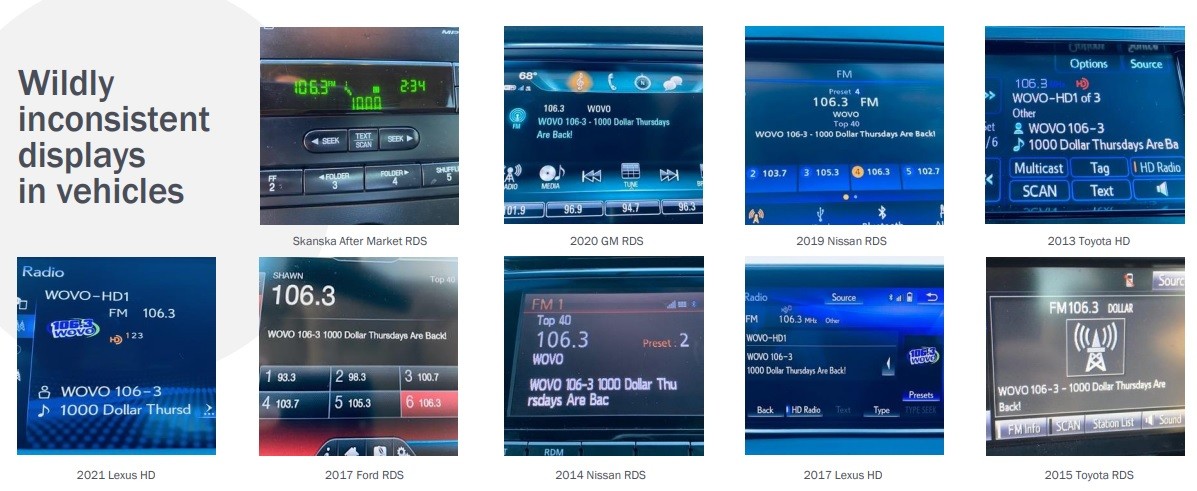Good story telling is what helps drive change, engage consumers, and define progress. Steve Newberry, CEO of Quu, is a master of the craft.
He told two stories, in particular, at the Michigan Association of Broadcasters event last week in Traverse City, Mich. The first story was to simply note for the broadcasters in attendance that whether they knew it or not their world was changed forever when the National Highway Traffic Safety Administration mandated backup cameras in cars.
With the stroke of a regulatory pen, NHTSA decreed that within a few years – in other words, now – all cars would be outfitted with eight-inch (or larger) LCD displays to enable drivers to see where they were going – when they were driving backwards (in the interest of saving approximately 150 lives each year). Simultaneously, auto industry engineers suddenly gained a huge canvas upon which to render the future of content consumption in cars – bye-bye narrow displays with five preset buttons, and a couple of knobs. Hello future radio!
The second story Steve told was of a meeting between the National Association of Broadcasters and General Motors, where a senior GM executive said:
“I love meeting with you guys – always do – but I must be honest. How can we expect radio to deliver on this technology in the future when you guys can’t get your act together on the basic RDS and HD information? Radio is a mess.”
The participants in that meeting needn’t have looked any further than the dashboards in cars parked outside the building. Every one of them would be guaranteed to have a different presentation of relevant metadata for the same radio station with the same content including information displayed in all caps or not, words cutoff or misspelled, or, most likely, information entirely missing.

SOURCE: Slide supplied by Quu showing different presentations of the same content from the same broadcaster in different cars.
The presentation of the information in the cars – wanting though it may be – is no fault of the auto makers. Auto makers understand that the radio is the one piece of customer interaction that they can actually control. Designers and engineers are doing their best to capture the information delivered via the over-the-air broadcast signal and render it for the convenience of the consumer.
Sadly, broadcasters do not universally have their act together. This creates confusion for the consumer and a disappointing experience in the dashboard – in spite of the best efforts of the car makers.
In an age when Google, Apple, Amazon, and other tech companies are seeking to commandeer automotive user experiences, there is no room for failure of this sort. Broadcasters need to get their collective act together simply to get in the game and participate in the snazzy new interfaces being delivered by car makers such as Audi and Mercedes Benz.
On stage at the MAB event was Juan Galdamez, senior director of broadcast strategy and business development at Xperi, which is laboring diligently to deliver the back-end systems and consumer-facing content capable of supporting those snazzy interfaces.
Galdamez emphasized, though, that Xperi is merely a toolkit for the automotive industry. It is worthless without proper inputs from broadcasters in the form of carefully curated metadata.
Fred Jacobs, moderator of the panel and owner of Jacobs Media, pointed out – ominously – that for the first time consumers surveyed as part of Jacobs Media’s annual TechSurvey identified Bluetooth, not radio, as “the most important media feature” among new car buyers. In other words, consumers want to plug their phones into their infotainment systems and project their mobile apps and content.
This is unquestionably bad news for broadcasters and auto makers. Screen projection solutions such as Apple’s CarPlay and Google’s Android Auto prejudice Internet sources of content over access to local media. Once these systems take over the screen it can be nearly impossible for users to find their way back to the radio.
Broadcasters need to clean up their acts. The tools and the screen real estate are in place to deliver the future of radio. For some broadcasters, that future has already arrived and they are thriving. Broadcasters need to embrace digital technology to make their stations easier to discover and enjoy. The auto makers have already done their part.






Quantum Computing Technologies and Challenges